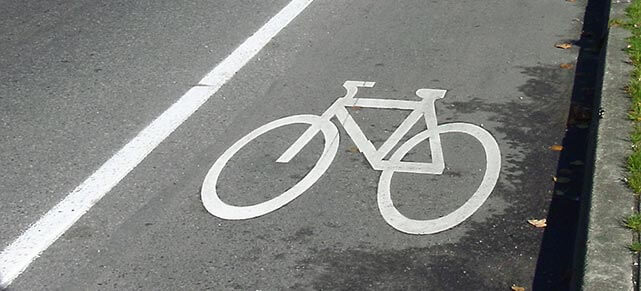Last week, while riding my bike to work, I was pulled over. The experience was, of course, jarring. I was riding in the right lane, looking to the left at the police car slowly driving alongside me, lights flashing, when I saw the stern look on the officer’s face as he pointed towards the side of the road. My heart raced. My head filled with questions. “What did I do wrong?”
It turns out, the officer pulled me over for obstructing traffic. I had been riding in the middle of the right lane on a four-lane road. The officer recommended that if I don’t feel safe riding next to the curb, I should instead ride on the sidewalk. As a cyclist, he said, he does the same. We had a 20-minute conversation, and by the end, the officer decided not to charge or warn me with anything. I’ll spare you the details, but I later found out that the legitimacy of the officer’s concern rests on clause 147.1 of the Highway Traffic Act, which determines whether someone is riding with “practicable” space.
But this is not an article about the innards of the Highway Traffic Act. The officer and I agreed that roads should be designed for a more diverse set of users. And while the majority of urban planners would agree – and are already designing more complete streets – there is an underlying point that is rarely discussed: building a bike lane is not just about creating space for a particular road user, it is about improving the experience of all road users. When a bike lane is built, cyclists no longer slow down cars and, as a result, traffic flows better and more safely for all.
In my experience, I’ve found that when marginalized groups’ interests are considered, conditions for the existing majority can also be improved. Often, it’s ideology that gets in the way, holding us back from seeing that some of our toughest challenges – whether related to urban planning, health care or income inequality –have solutions that can benefit everyone involved.
This understanding is part of how I encourage community organizations to go about engaging businesses in sustainability action. Their purpose is not simply to reduce business’ carbon footprints; it is also about increasing the profitability of the business, engaging and attracting superstar employees and creating economic opportunities for low-carbon products and services. When businesses set targets to reduce their carbon impacts, everyone benefits.
Returning to transportation, the days of talking about “the war on cars” should be long over. This ideological rhetoric makes good headlines but erodes meaningful conversation. For better or worse, Canadian cities in the 20th century were built and retrofitted around the fancy invention of their time – the car. But Canadians are changing their transportation choices. And as more policies and infrastructure are built to welcome all users, existing users should cheer along with them because we’re all better off as a result.
In the meantime, while cyclists are stuck sharing infrastructure that was built for bigger and faster motorists, maybe we can all compensate for this lack of foresight with a surge in patience and camaraderie. This, too, is in all of our best interests.
Mike Morrice founded Sustainable Waterloo Region (SWR) and served as the organization’s executive director until January 2014. He now leads Sustainability CoLab, a national non-profit created to help community organizations launch and grow target-based sustainability programs similar to the one piloted at SWR. You can follow him at @CoLabMike and Sustainability CoLab at @SustainCoLab.







